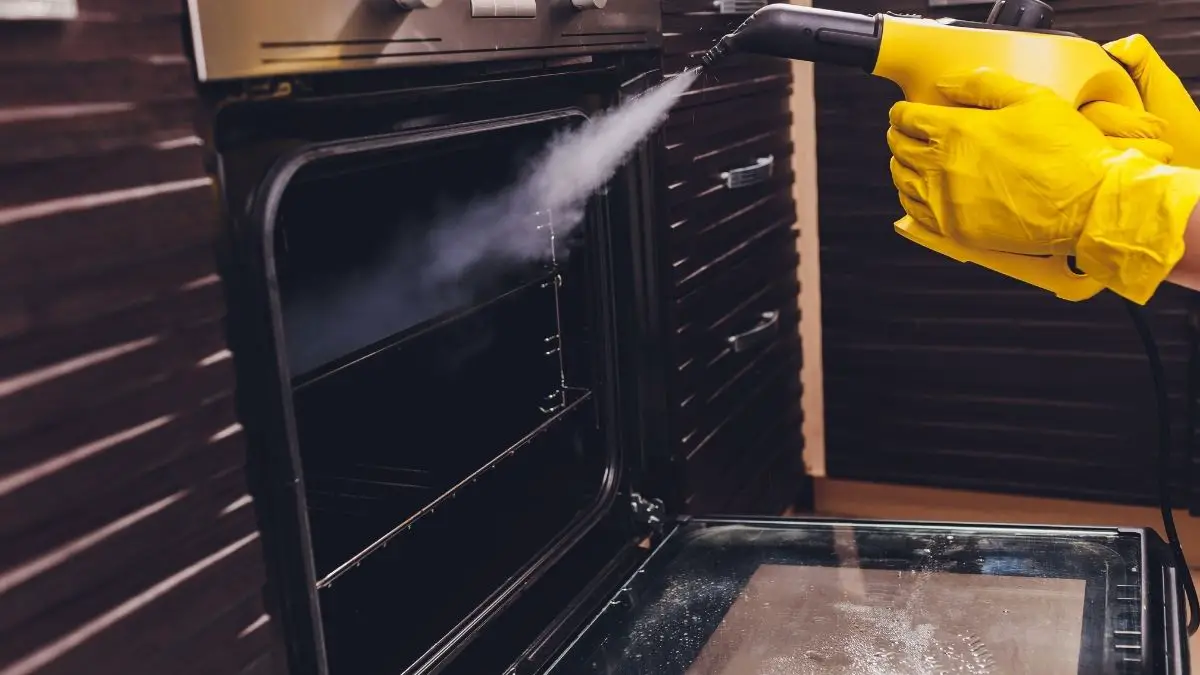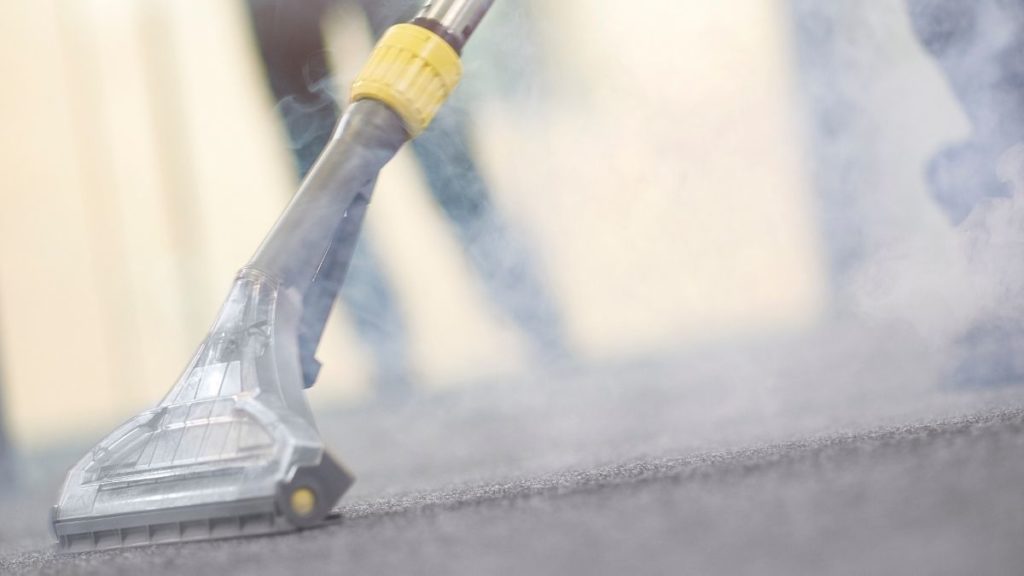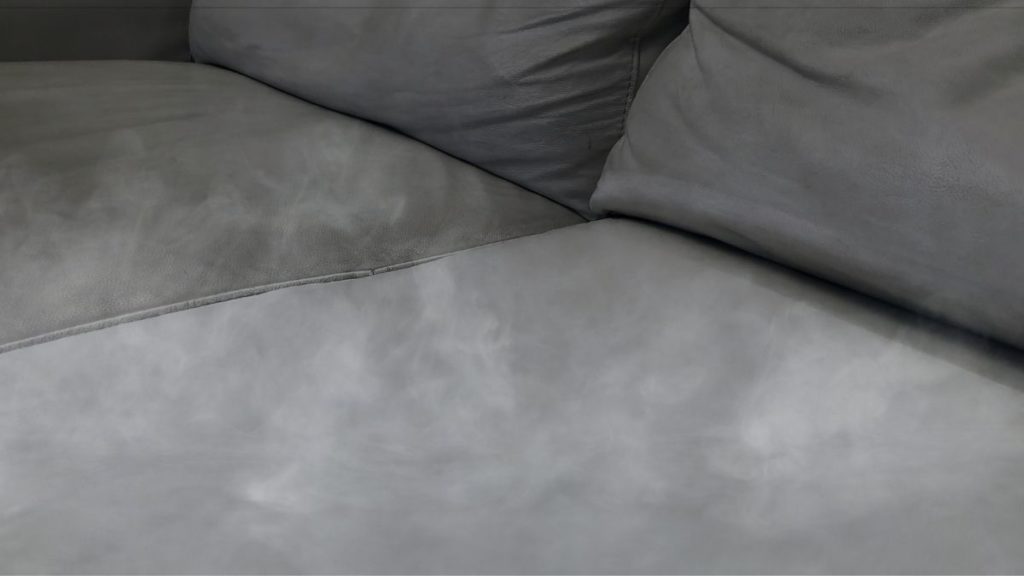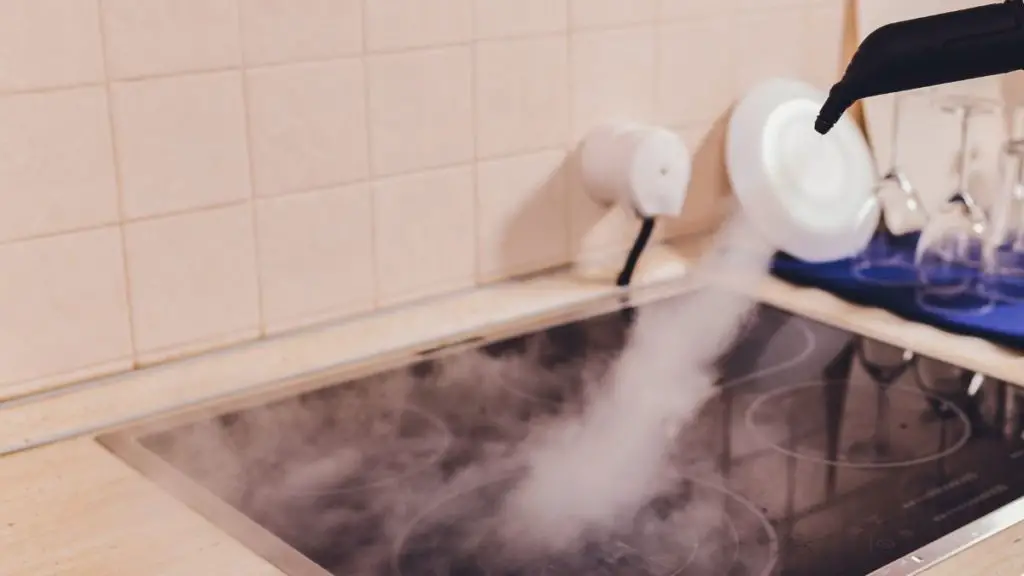Steam Cleaning Oven vs Self Cleaning Oven – Which is Best?
*As an Amazon Associate we earn from qualifying purchases. The price to you remains the same.
Ovens are an integral part of our life. From cooking our daily meals to baking, oven does it all for us. Since the invention of an oven, it has undergone numerous changes and transformations with lots of additions and subtractions of features depending on the usability and necessity.
While preparing delicious food has become easier, there still remains one basic step that has not changed much over the years. The cleaning of the interior of the oven. With time, the oven is bound to accumulate tonnes of grits, fat deposits, grease and remnants of the scattered gravy or food particles all over the inside walls. This dirt, if not removed on time can not only cause some serious unhealthy growth but also may corrode the interiors over time.
There are generally only two types of traditional cleaning modes available in an oven. It is either a self-cleaning oven or a steam cleaning oven. Though the purpose of the cleaning methodology is the same, however, the mechanism of how the procedure happens is poles apart from each other. In this post, we will talk about Steam Cleaning Oven Vs Self-Cleaning Oven with pros and cons.
Best Steam Cleaners (Multipurpose)
Table of Contents
What is a Steam Cleaning Oven?
Unlike a self-cleaning oven that utilizes heat up to 1000 degrees Fahrenheit, the steam cleaning oven also uses high-temperature steam to cleanse the oven. However, this temperature never goes beyond 25o degrees Fahrenheit.
In this kind of oven, water is added into the oven surface and the oven is switched on to hat up the water to the extent of formation of steam. The steam being scalding hot, helps in softening up the grease and other dried up food remnants all over the interior walls of the oven. Once softened, this dirt can be easily dislodged and cleaned away.
The interior walls of the steam cleaning oven are generally enamel coated. The enamel coating makes it easier to clean away those dissolved and dislodged dirt particles without much legwork.
Using a plain high absorbent cloth, the inner walls of the microwave can be wiped out. The entire process takes up a maximum of 60 to 90 minutes, thus saving up a lot of time. This shorter cleaning duration makes it an easy choice to clean the Steam Cleaning Oven at a regular interval without much planning or preparation.
Pros and Cons of a Steam Cleaning Oven
- Shorter cleaning time of 60 to 90 minutes at the maximum depending on the oven size.
- No remnant odor or smell
- It is very energy efficient as it consumes very little power.
- Effective if you want to clean the oven regularly
- Backside and the wall corners are not always well cleaned as many a time tough grits and dirts do not dislodge even after repetitive steaming.
How to Use the Steam Clean Feature in the Oven?
Steam cleaning uses a lower temperature than the self-cleaning oven. However, the steam cleaning oven even though is a much safer option needs to follow a few basic yet important instructions.
- It is best to never use oven cleaning products while steam cleaning oven. The steam produced may cause a chemical breakdown of the agent and the remnants can later cause food poisoning or many such issues.
- It is best to steam clean the oven after any accidental spills instead of waiting. The longer you wait, the harder the spilled dirt will get and thus dislodging them will become very tough later on.
- It is important to cool the oven to room temperature before using the Steam cleaning option.
- Always remove any water and moisture remnant on the base and walls of the oven after steam cleaning is completed. This will prevent mold and rust from occurring.
- Harder stains and debris lodged in the corners and walls should be scrapped using a soft-bristled brush or nylon scrubber.
Recommended Steam Cleaner – Our Top Pick!

What is a Self Cleaning Oven?
If you think the word self-cleaning means there is not much legwork involved and it is an automatic process, then you are slightly wrong. This type of oven uses extremely high temperatures to emulate the debris collected within the oven chamber. The heat carbonizes the dirt and changes them into ash. Once the oven is cooled to room temperature, the interior is cleaned with a piece of cloth and all the ash particles are swept out of the oven.
Though the inner Teflon coating can withstand extremely high temperature, it is often advised to walk out of the house while this heating up process is going on. Carbon component gas produced during this immolation often may go undetected initially.
The oven often heats up to about 1000 degrees Fahrenheit and that in itself can cause an increase in the room temperature a great deal to the extent of making you uncomfortable. Another factor that one must consider is that the procedure of heating and burning the dirt takes a very long time. It consumes about 4 to 5 hrs of time to finish the entire process, so one meal is definitely going to be taken out option as you can’t cook for the time being.
Pros & Cons of having a Self Cleaning Oven
- Cleans away dirt, and any unnecessary microscopic growth. The oven is back to being practically new.
- The remnants ash can be easily swept away with a brush or cloth.
- RUtilizes a lot of heat and in turn heats up the surrounding very quickly.
- There is a strange and strong burnt remnant like the smell after the cleaning process is complete that can last for a few days.
- Long processing time of up to 4 to 6 hrs depending on the size of the oven.
How to Use the Self-cleaning Option in the Oven?
Before you even begin with the process of Self Cleaning of Oven, there are a few points that one must definitely consider mandatorily knowing about. These are
- The self-cleaning oven does not need to be cleaned every time you cook. It should be cleaned after a certain period of regular cooking.
- Make sure to always remove the shelvings before switching on the Self-clean mode. Or else the stainless steel shelves will burn away for sure.
- Ensure that there is never anything on the top surface of the oven as the extremely high temperature can melt or break anything on it.
- The fume created post-self-cleaning can be hazardous. Make sure to ventilate and air the place well and also remain outside the house until the process is complete.
- Make sure to clean up as much of the dirt as you manually can. The more debris is scraped out by hand, the less will be the fume and ash remnants.
- Lock the oven well or use the auto-lock option, so that no one pries open the oven during the process of Self-cleaning
- Time the process by observing at regular intervals if the machine does not have an auto-shut mechanism.
- Clean the ash particles only after the interior of the oven has reached room temperature. That may take a few more hours post self-cleaning. Scalding can be very painful. Remember that!
- Use a vacuum cleaner to remove dry ash dust first and then use a damp cloth to remove the finer particles.
- Using chemical solvents like lye is best to avoid as toxic remnants of buildup over time can be dangerous for the health.
Steam Cleaning Oven vs Self-Cleaning Oven- Which is Best?
The truth is we all try to find shortcuts. The reason for opting a Self Cleaning Oven over a Steam Cleaning Oven is for the sake of convenience and rest.
- Self-cleaning Oven does not require one to manually scrub the hard and tight deposits. Instead, its all done by the oven and at the end, you only need to simply brush away the ash remnants at the bottom plate of the oven.
- The amount of time taken by a self cleaning oven to complete the process is very long. It can take 4 to 6 hrs to finish cleaning completely. An hour or so more is needed to cool it down to room temperature for removing the ash debris from inside. That is almost half a day of rest and no kitchen work. Who would not love that!
However, considering the above-mentioned points we can never forget that if time and energy consumption are considered or if health issues are a factor then a steam clean oven definitely will win the votes. They are not only energy efficient but are also very time efficient and hardly takes about 30 to 45 minutes to clean the oven. The absence of any residual odor also works in favor of steam clean oven.
Things to remember while cleaning an Oven – Be it a Steam clean oven or a Self Cleaning Oven
It does not matter which type of Oven you are using. but, what matters, in the end, is that you should always consider some very important factors while cleaning the oven. These factors include,
- Never use metallic scrapers or harsh pads within the internal walls and body of the oven. This will not only remove the dirt and grease but also the Teflon or enamel coating that lines the inner walls of the oven.
- Never use acids and bleaches in the oven. The residual film is extremely hazardous for us and corrosive for the oven
- Any cleaning agents like lye should be avoided at all costs.
- Post cleanup should always be done after the oven is cooled down to room temperature.
- Never clean the oven before any grand occasion. It is best left to be done after the celebration. You do not want your turkey to smell like burnt meat.
- Always use a good super absorbent cloth for cleaning the moisture in the steam clean oven and a microfiber cloth to clean the Self Clean Oven. The oven should not have any remnants of the cleaning process left within the chamber.
Top Reviewed Steam Cleaner for Ovens Available Currently
Based on the current scenario, most of the steam cleaners available in the market have some very interesting additional features and upgrades. The top three most sold steam cleaners for ovens in each category are mentioned below.
- Vapamore MR-75 Amico Hand Held Steam Cleaner
- McCulloch MC1275 Heavy Cleaner
- Steamfast SF-370WH Multi-Purpose Steam Cleaner
How to Steam Clean an Oven With No Chemicals (Video Guide)
Final Verdict
Both the steam clean oven and self clean oven has its own positive and negative aspects that need to be considered while purchasing them. We have shared our opinion regarding Steam Cleaning Oven vs Self-Cleaning Oven. Depending on the usability of the oven and the number of debris remnants, one can choose the best option suited for them. However, it is important to take into consideration the other factors like the overall cost of the product, annual maintenance charges, average monthly energy consumption, etc as buying factors before delving deeper into the right choice for our needs.
As a conclusion, we can assume that an oven is an integral part of any home. Maximum cooking happens on or in an oven. So choosing the right quality and tye is very essential in the long run.
Last update on 2024-07-14 / Affiliate links / Images from Amazon Product Advertising API











